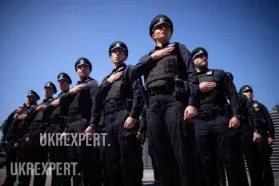
What is defense, what are the types of defense, the goal and its objectives

Defense is a set of measures and strategies aimed at protecting the territory, national interests, population and resources from possible threats from outside or inside. It is one of the key components of the national security of every country and an important part of international relations. In this article, we explain what state defense is, which international acts regulate the right to defense, and explain the goals and objectives of defensive actions.
What international documents regulate the state’s right to defense?
Modern international standards regulate the rights of a state to conduct foreign policy and defense activities. In particular, this is stated in the UN Charter, which is one of the most important documents confirming the right to defense. According to the charter, countries have the right to self-defense in the event of an attack by another country. The UN Charter also defines the right to collective defense, when states can unite to defend themselves against a threat from an aggressor. Other international acts regulating the right to defense:
- The Geneva Conventions, which regulate the conduct of war and the protection of persons not taking part in hostilities (prisoners of war, civilians, etc.), also confirm the right to defense;
- The Declaration on Principles of International Law, adopted by the UN General Assembly, also reaffirms the right of states to defend themselves in the event of attack;
- Additional Protocol to the Geneva Conventions. This protocol contains rules governing the conduct of armed conflicts and the protection of civilians. It also confirms the right to defense in the event of hostilities;
- The Treaty on the Non-Proliferation of Nuclear Weapons, adopted in 1968, is also important in ensuring the right of countries to defense, in particular in the context of strategic nuclear defense.
What types of defense exist and what are their goals and objectives?
In total, there are 3 main types of defense that the state can use. Let’s take a closer look at them:
- Military defense: This is the main component of defense, which includes military forces, equipment and technologies to protect the country from external aggression;
- Civil defense: This form of defense is aimed at protecting civilians from hazards such as natural disasters, man-made accidents, terrorist attacks, etc. It includes emergency planning, evacuation procedures, and medical care;
- Information defense: This type of defense focuses on protecting against cyberattacks, disinformation and other information threats. It includes cyber defense, intelligence and counterintelligence, and public outreach.
The goal of defense can be divided into several objectives that are closely interrelated. They are:
- The main goal of defense is to ensure the security and integrity of the country’s territory from any threats.
- Protection of the population. Defense must protect the life, health and well-being of citizens from possible dangers.
- Preservation of national interests. This includes the protection of the country’s economic, political, social and cultural interests from external aggression.
As for defense objectives, they can vary depending on the stage of the defense effort. For example, defense can act as a deterrent, preventing aggression by demonstrating the ability to repel any attack. Other tasks of defense:
- Mobilization and preparation: The defense must have effective mobilization and preparation plans to respond to a threat at short notice.
- Cooperation and alliances: States often form defense alliances to jointly protect their interests and share resources and information.
- Increasing military and technical capabilities: Defense is constantly adapting to changes in technology and threats by investing in new means and strategies.
The most popular defense doctrines
There are several defense doctrines used by states to formulate their security and defense strategies. The most popular one is the doctrine of countermeasures, which became the basis of the United States’ strategy during the Cold War, and was intended to contain the spread of communism. The main task was to curb Soviet influence and the spread of communism through political, economic, and military support of the allies and the use of diplomacy and economic pressure. Other popular doctrines:
- Preemptive or anticipatory war. It involves the use of military force to prevent possible security threats before they become real. For example, this doctrine can be used by a country to prevent the development of military capabilities in other countries that it considers a threat;
- Responsive response: It is based on the use of an appropriate, proportionate response to a threat or attack. Instead of extreme reactions, this strategy aims to use the minimum necessary force to ensure security;
- The doctrine of retreat: It involves a strategy of strategic retreat in the face of overwhelming enemy force in order to preserve life and resources. Although this may seem contrary to conventional defense strategies, it can be effective in certain circumstances.
- The doctrine of limited war is based on the use of military force on a limited scale to achieve specific limited goals, usually without the intention of complete subjugation of the enemy.
What is national security and defense of Ukraine – video
How the national defense system of Ukraine is organized – watch a YouTube video on our portal!
Visnovok
In today’s world, where threats can be diverse and complex, effective defense requires a comprehensive approach and cooperation at both national and international levels. It is a key element of ensuring peace and stability.
Answers to frequently asked questions
Collective defense allows countries to unite to ensure collective security, but there may be a problem of coordination and differences in interests between states.
The main components of the country’s defense strategy include military power, geostrategic location, intelligence, and the development of the military-industrial complex.
Factors include security threats, the geopolitical environment, economic constraints, technological development, and the country’s defense requirements.
The author of the Portal UKRexperts
Співпраця - текст
We are sure that knowledge should be accessible to everyone, and that is why UkrExperts strives to be your first choice when it comes to enriching intellectual potential.


